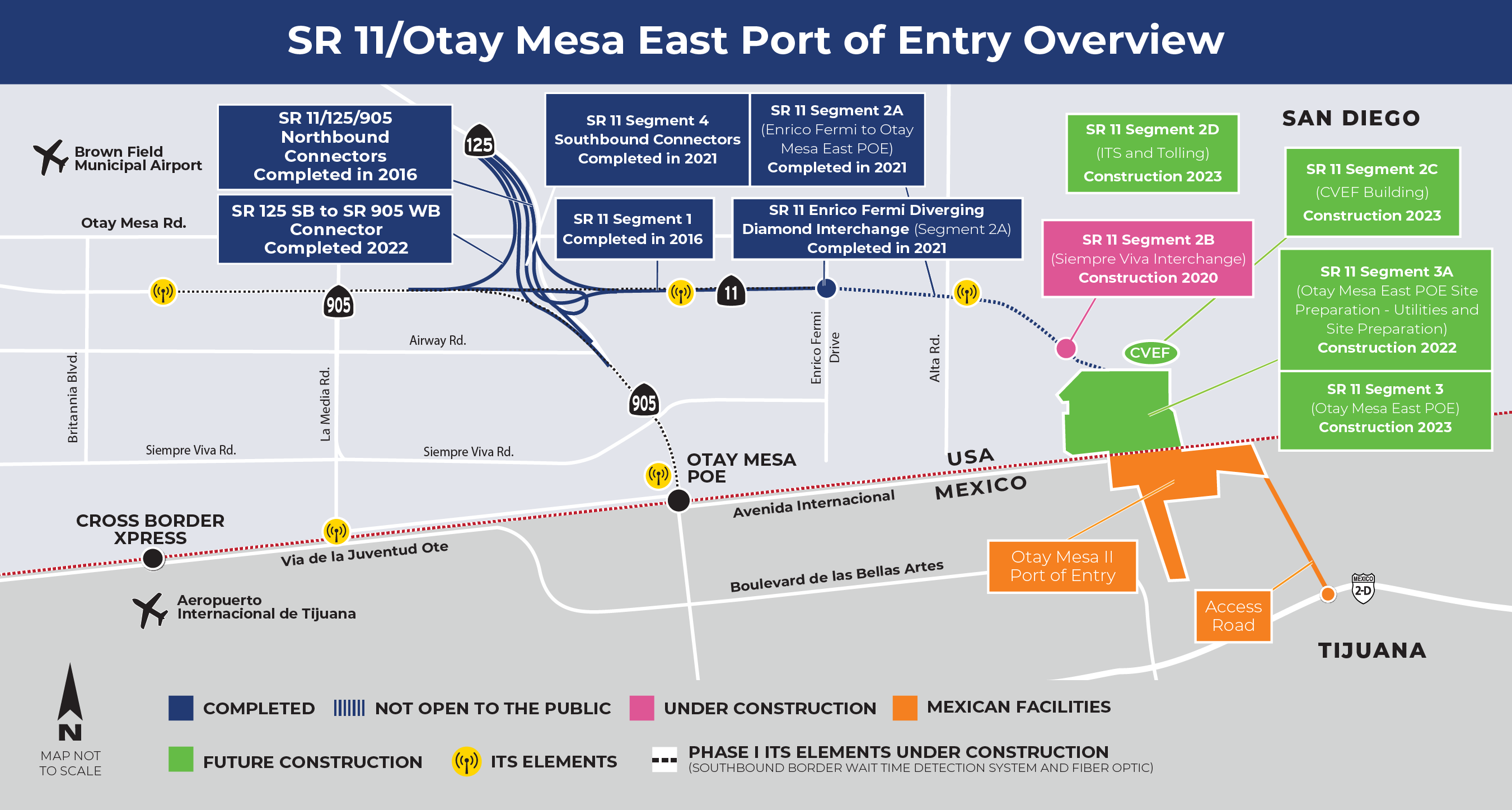Introduction
The State Route 11 (SR 11)/Otay Mesa East Port of Entry (POE) Project is a joint venture between the San Diego Association of Governments (SANDAG) and Caltrans, in collaboration with state and federal partners in the U.S. and Mexico, to create a 21st century border crossing for the San Diego-Baja California region that will enhance regional mobility and fuel economic growth and binational trade. The new port of entry will be clean, green, and smart.

View English Map | View Spanish Map